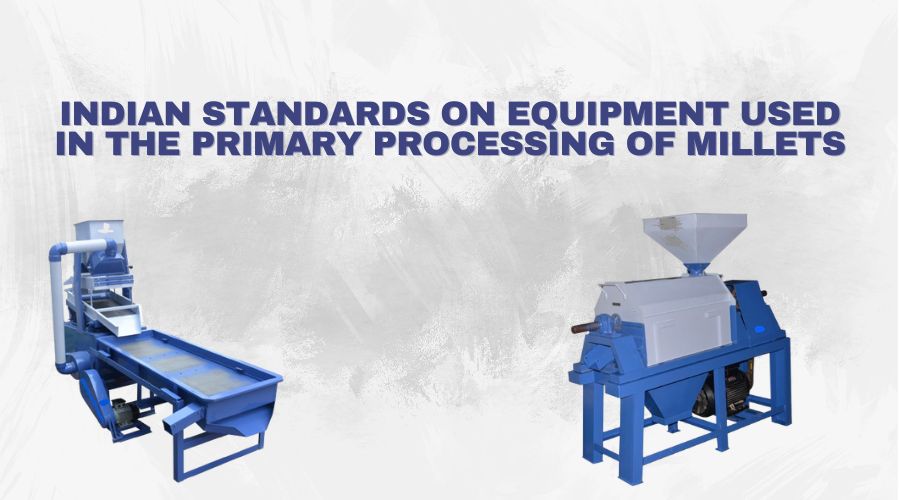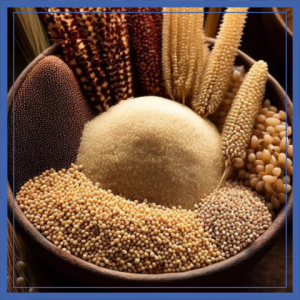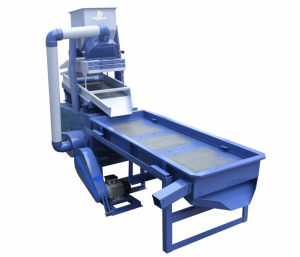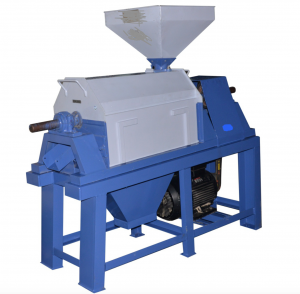

INTRODUCTION
During its 75th session in March 2021, the United Nations General Assembly declared 2023 as the International Year of Millets (IYoM), with the Ministry of Agriculture & Farmers Welfare, Government of India serving as the nodal body for IYoM – 2023 celebrations. Millets, known for their exceptional nutrition and historical significance as a dietary staple, have been designated as ‘Shree Anna’ by the honourable Prime Minister of India. Despite their nutritional benefits, changing consumer preferences and a lack of millet processing resources led to a decline in consumption.

Recognizing the importance of these nutritious grains, the government aims to rejuvenate millet consumption during the IYoM – 2023. Processing is essential before millets can be consumed, and the government has taken steps to promote millet processing. The equipment used in millet processing plays a crucial role in ensuring the quality of the processed grains.
In light of this, the Agriculture and Food Processing Equipment Sectional Committee, FAD 20 of the Bureau of Indian Standards, found it essential to develop equipment standards. This is aimed at maintaining overall quality and encouraging the consumption of this valuable and nutritious grain, which can benefit both health and the economy. Consequently, four Indian Standards have been developed to cover equipment used in primary processing operations, including pre-cleaning, cleaning, grading, dehusking, destoning, and polishing.
2. RECENTLY DEVELOPED INDIAN STANDARDS


As of now, following Indian Standards have been developed for equipment used in the primary processing of millets.
i) IS 19039 : 2023 Cleaner cum Grader for Millets with Pre-Cleaner — Specification and Test Code
Millet grains straight from the field contain dirt, stones, chaff, and other impurities. Therefore, they cannot be consumed or further processed without proper cleaning. Some millets, such as sorghum, pearl, and finger millets, do not need dehusking. In these cases, grading can be done after pre-cleaning and cleaning. Pre-cleaning, cleaning, and grading processes are crucial to render the grains suitable for consumption or further processing. This standard guides manufacturers in selection of components, fabrication, and safety features when designing and fabricating the equipment. It also outlines test methods, including short and long-run tests under load and no-load conditions, to assess the effectiveness, durability, and proper ergonomic design of equipment.
ii) IS 19040 : 2023 Millet Dehusker — Centrifugal Type — Specification and Test Code
Some of the millets cannot be consumed directly after pre-cleaning and cleaning like foxtail, little, kodo, proso, barnyard, and brown top millets, as they have a hard cellulosic husk layer
that humans cannot digest. The removal of the husk layer thus becomes an important step in the processing of these grains. To remove the husk from the grain, one can use two forces – impact or shear. A stone grinding mill, manual or motor powered, employs the shear force while manual pounding or centrifugal hulling machines use the impact force. This standard is meant for centrifugal type millet dehusker, wherein material, constructional and safety requirements for every component of this equipment are specified. It also outlines test methods, including short and long-run tests under load and no-load conditions, to assess the equipment’s effectiveness, durability, and proper ergonomic design.
iii) IS 19041: 2023 Destoner for Millets — Specification and Test Code
Prior to dehusking or polishing, it is essential to eliminate all stones to minimize grain damage. A destoner achieves this by utilizing the difference in mass (density/specific gravity) between the stones/mud within the grains and the good grains, segregating them through continuous vibration and air flow. The standard details the material, construction, and safety requirements for each component of this equipment. Additionally, it establishes test methods, encompassing short and long-run tests under both load and no-load conditions, to evaluate the effectiveness, durability, and ergonomic design of equipment.
iv) IS 19042 : 2023 Symbols and Flow Diagrams Used in Primary Processing of Millets
Understanding the complete primary processing of millet is crucial when designing the layout for an industrial millet processing setup. The use of symbols in millet processing is essential for fostering a common understanding and facilitating clear communication. To achieve this goal, a standard has been developed. This standard includes a general process flow chart with symbols representing equipment used in cleaning, destoning, grading, dehusking, and other accessories involved in the processing, such as bag filling and loading.
3. IMPACT ON INDUSTRIAL DEVELOPMENT
The newly established Indian Standards mentioned above will play a vital role in enhancing the millet processing sector, serving as a key factor in building a robust quality infrastructure and preventing the use of sub-standard equipment. In the fiscal year 2021-22, India’s millet exports amounted to 64 million USD. Notably, there has been a 12.5% increase in millet exports from April to December 2023 compared to the corresponding period last year. The implementation of these national standards is anticipated to have a substantial positive influence on the millet industry, fostering its growth and development in the global market.
In order to know more about Indian standards, connect to BIS social media platforms.
Pradeep Sharma
Scientist-B/Assistant Director
Food and Agriculture Department,
Bureau of Indian Standards